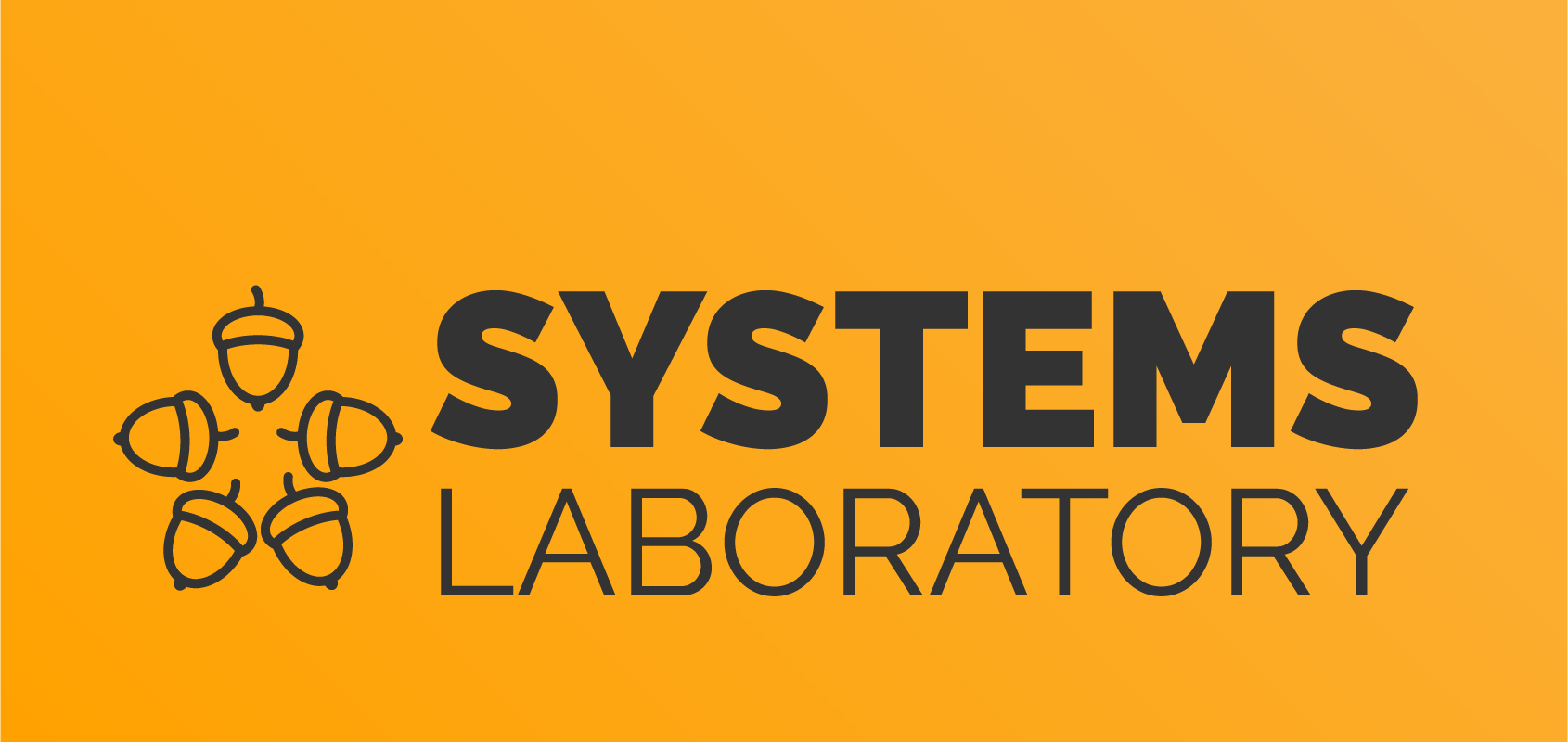Differences
This shows you the differences between two versions of the page.
|
ep:laboratoare:02 [2016/10/26 21:28] emilian.radoi |
ep:laboratoare:02 [2017/10/02 20:27] (current) emilian.radoi |
||
|---|---|---|---|
| Line 1: | Line 1: | ||
| ====== Tutorial 02 ====== | ====== Tutorial 02 ====== | ||
| - | |||
| The material for this tutorial was taken from Darren Hoch’s “Linux System and Performance Monitoring”. You can access it at: http://ufsdump.org/papers/oscon2009-linux-monitoring.pdf. | The material for this tutorial was taken from Darren Hoch’s “Linux System and Performance Monitoring”. You can access it at: http://ufsdump.org/papers/oscon2009-linux-monitoring.pdf. | ||
| Line 50: | Line 49: | ||
| - Convert 1 of 166 to decimal (1/166 = 0.006 seconds per Rotation) | - Convert 1 of 166 to decimal (1/166 = 0.006 seconds per Rotation) | ||
| - Multiply the seconds per rotation by 1000 milliseconds (6 MS per rotation) | - Multiply the seconds per rotation by 1000 milliseconds (6 MS per rotation) | ||
| - | - Divide the total in half (6/2 = 3 MS) or RD | + | - Divide the total in half (6/2 = 3 MS) (RD is considered half a revolution around a disk) |
| - Add an average of 3 MS for seek time (3 MS + 3 MS = 6 MS) | - Add an average of 3 MS for seek time (3 MS + 3 MS = 6 MS) | ||
| - Add 2 MS for latency (internal transfer) (6 MS + 2 MS = 8MS) | - Add 2 MS for latency (internal transfer) (6 MS + 2 MS = 8MS) | ||
| Line 81: | Line 80: | ||
| To see the effect the swapping to disk is having on the system, check the swap partition on the drive using **iostat**. | To see the effect the swapping to disk is having on the system, check the swap partition on the drive using **iostat**. | ||
| - | {{ :ep:laboratoare:ep2_poz2.png?600 |}} | + | {{ :ep:laboratoare:ep2_poz2.png?650 |}} |
| Both the swap device (///dev/sda1//) and the file system device (///dev/sda3//) are contending for I/O. Both have high amounts of write requests per second (//w/s//) and high wait time (//await//) to low service time ratios (//svctm//). This indicates that there is contention between the two partitions, causing both to underperform. | Both the swap device (///dev/sda1//) and the file system device (///dev/sda3//) are contending for I/O. Both have high amounts of write requests per second (//w/s//) and high wait time (//await//) to low service time ratios (//svctm//). This indicates that there is contention between the two partitions, causing both to underperform. | ||
| Line 108: | Line 107: | ||
| In the following example, a system with a 100BaseTX card is running auto negotiated in 10BaseT. | In the following example, a system with a 100BaseTX card is running auto negotiated in 10BaseT. | ||
| - | {{ :ep:laboratoare:ep2_poz4.png?500 |}} | + | {{ :ep:laboratoare:ep2_poz4.png?450 |}} |
| The following command can be used to force the card into 100BaseTX: //# ethtool -s eth0 speed 100 duplex full autoneg off//. | The following command can be used to force the card into 100BaseTX: //# ethtool -s eth0 speed 100 duplex full autoneg off//. | ||
| Line 116: | Line 115: | ||
| It is impossible to control or tune the switches, wires, and routers that sit in between two host systems. The best way to test network throughput is to send traffic between two systems and measure statistics like latency and speed. | It is impossible to control or tune the switches, wires, and routers that sit in between two host systems. The best way to test network throughput is to send traffic between two systems and measure statistics like latency and speed. | ||
| - | === Using //iptraf// for Local Throughput === | + | === Using iptraf for Local Throughput === |
| The **iptraf** utility (http://iptraf.seul.org) provides a dashboard of throughput per Ethernet interface. (Use: //# iptraf –d eth0//) | The **iptraf** utility (http://iptraf.seul.org) provides a dashboard of throughput per Ethernet interface. (Use: //# iptraf –d eth0//) | ||
| Line 129: | Line 128: | ||
| The output shows that that the throughput on the network is around 89 mbps. The server (192.168.1.215) is on the same LAN. This is exceptional performance for a 100 mbps network. | The output shows that that the throughput on the network is around 89 mbps. The server (192.168.1.215) is on the same LAN. This is exceptional performance for a 100 mbps network. | ||
| - | {{ :ep:laboratoare:ep2_poz5.png?500 |}} | + | {{ :ep:laboratoare:ep2_poz5.png?430 |}} |
| Another useful test using **netperf** is to monitor the amount of TCP request and response transactions taking place per second. The test accomplishes this by creating a single TCP connection and then sending multiple request/response sequences over that connection (ack packets back and forth with a byte size of 1). This behavior is similar to applications such as RDBMS executing multiple transactions or mail servers piping multiple messages over one connection. | Another useful test using **netperf** is to monitor the amount of TCP request and response transactions taking place per second. The test accomplishes this by creating a single TCP connection and then sending multiple request/response sequences over that connection (ack packets back and forth with a byte size of 1). This behavior is similar to applications such as RDBMS executing multiple transactions or mail servers piping multiple messages over one connection. | ||
| Line 135: | Line 134: | ||
| The following example simulates TCP request/response over the duration of 30 seconds. | The following example simulates TCP request/response over the duration of 30 seconds. | ||
| - | {{ :ep:laboratoare:ep2_poz6.png?500 |}} | + | {{ :ep:laboratoare:ep2_poz6.png?450 |}} |
| In the previous output, the network supported a transaction rate of 4453 psh/ack per second using 1 byte payloads. This is somewhat unrealistic due to the fact that most requests, especially responses, are greater than 1 byte. | In the previous output, the network supported a transaction rate of 4453 psh/ack per second using 1 byte payloads. This is somewhat unrealistic due to the fact that most requests, especially responses, are greater than 1 byte. | ||
| Line 141: | Line 140: | ||
| In a more realistic example, a **netperf** uses a default size of 2K for requests and 32K for responses. | In a more realistic example, a **netperf** uses a default size of 2K for requests and 32K for responses. | ||
| - | {{ :ep:laboratoare:ep2_poz7.png?500 |}} | + | {{ :ep:laboratoare:ep2_poz7.png?470 |}} |
| The transaction rate reduces significantly to 222 transactions per second. | The transaction rate reduces significantly to 222 transactions per second. | ||
| - | === Using //iperf// to Measure Network Efficiency === | + | === Using iperf to Measure Network Efficiency === |
| The **iperf** tool is similar to the **netperf** tool in that it checks connections between two endpoints. The difference with **iperf** is that it has more in-depth checks around TCP/UDP efficiency such as window sizes and QoS settings. The tool is designed for administrators who specifically want to tune TCP/IP stacks and then test the effectiveness of those stacks. The **iperf** tool is a single binary that can run in either server or client mode. The tool runs on port 5001 by default. In addition to TCP tests, **iperf** also has UDP tests to measure packet loss and jitter. | The **iperf** tool is similar to the **netperf** tool in that it checks connections between two endpoints. The difference with **iperf** is that it has more in-depth checks around TCP/UDP efficiency such as window sizes and QoS settings. The tool is designed for administrators who specifically want to tune TCP/IP stacks and then test the effectiveness of those stacks. The **iperf** tool is a single binary that can run in either server or client mode. The tool runs on port 5001 by default. In addition to TCP tests, **iperf** also has UDP tests to measure packet loss and jitter. | ||
| - | ==== Individual Connections with //tcptrace// ==== | + | ==== Individual Connections with tcptrace ==== |
| The **tcptrace** utility provides detailed TCP based information about specific connections. The utility uses **libpcap** based files to perform an analysis of specific TCP sessions. The utility provides information that is at times difficult to catch in a TCP stream. This information includes: | The **tcptrace** utility provides detailed TCP based information about specific connections. The utility uses **libpcap** based files to perform an analysis of specific TCP sessions. The utility provides information that is at times difficult to catch in a TCP stream. This information includes: | ||
| Line 180: | Line 179: | ||
| * Run //iostat –x 1 5// | * Run //iostat –x 1 5// | ||
| - | * Considering the last two outputs outputs provided by the previous command, calculate the efficiency of IOPS for each of them. Does the amount of data written per I/O increase or decrease? | + | * Considering the last two outputs provided by the previous command, calculate the efficiency of IOPS for each of them. Does the amount of data written per I/O increase or decrease? |
| Hint | Hint | ||
| - | * Divide the reads per second (//r/s//) and the writes per second (//w/s//) by the kilobytes read (//rkB/s//) and written (//wkB/s//) per second. | + | * Divide the kilobytes read (//rkB/s//) and written (//wkB/s//) per second by the reads per second (//r/s//) and the writes per second (//w/s//). |
| ==== Ex02 ==== | ==== Ex02 ==== | ||


